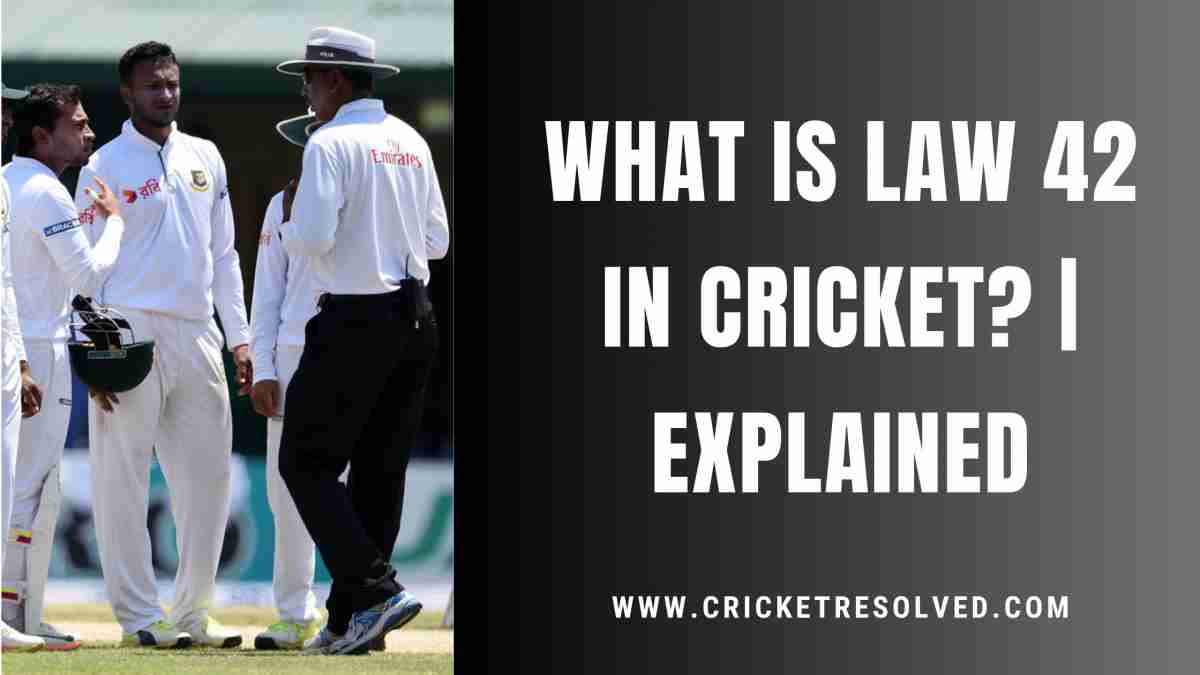
Cricket, a sport cherished for its thrilling moments and a strong sense of camaraderie, embodies the values of fair play, sportsmanship, and respect. The Marylebone Cricket Club’s (MCC) Laws of Cricket, specifically Law 42, play a vital role in maintaining the game’s integrity.
This article delves into the significance of Law 42, its four levels of offences, and the actions umpires take to ensure players adhere to the spirit of cricket.
The Essence of Law 42: Promoting Sportsmanship and Respect
At the core of cricket lies the spirit of the game, emphasising respect, integrity, and a level playing field. Law 42, titled “Player’s Conduct,” acts as a guiding light to uphold these values throughout the match.
Understanding the Four Levels of Offences
Law 42 classifies offences into four levels, each associated with specific actions by players that breach the expected conduct standards:
- Level 1 Offences: Level 1 offences include actions such as willfully mistreating the cricket ground or equipment, showing dissent at the umpire’s decisions, using offensive language, making obscene gestures, excessive appealing, and other misconduct that umpires consider equivalent to a Level 1 offence.
- Level 2 Offences: Level 2 offences comprise more serious violations, such as showing serious dissent at the umpire’s decisions, making inappropriate physical contact, throwing the ball dangerously, and using obscene language or gestures towards players, umpires, officials, or spectators.
- Level 3 Offences: Level 3 violations encompass the act of intimidating an umpire through language or gestures, along with making threats to assault anyone other than an umpire.
- Level 4 Offences: Level 4 offences are the most severe, encompassing actions like threatening to assault an umpire, making inappropriate physical contact with an umpire, physically assaulting anyone, and committing any other act of violence.
Umpire Actions and Penalties
When an umpire identifies an offence, they take the following steps based on the level of the misconduct:
- Level 1 Offences: A warning is issued for the first offence. Subsequent Level 1 offences result in 5 penalty runs awarded to the opposing team.
- Level 2 Offences: The umpire awards 5 penalty runs and warns the captain about future Level 1 offences.
- Level 3 Offences: The offending player is suspended from the field of play for a specific number of overs, based on match type. The umpire also awards 5 penalty runs and issues a warning for future Level 1 offences.
- Level 4 Offences: The offending player is removed from the field for the remainder of the match. Again, 5 penalty runs are awarded, and a warning is issued for future Level 1 offences.
- Captain’s Refusal to Remove a Player: If a captain refuses to remove an offending player, Law 16.3 (Umpires awarding a match) is invoked. If both captains refuse to follow the umpires’ instructions, the players are instructed to leave the field, and the match is not concluded.
Also Read: Decoding the Duties of Umpires in Cricket: A Comprehensive Guide
Conclusion: Embracing the Spirit of Cricket
Law 42 serves as a pillar of fair play, sportsmanship, and respect in cricket. By understanding the four levels of offences and the corresponding actions by umpires, players and teams can uphold the spirit of cricket, ensuring that this beloved sport continues to inspire and unite players and fans alike worldwide. Remember, cricket’s essence lies in the pursuit of victory, intertwined with the values of sportsmanship and camaraderie.
Read Next: 25+ Weird and Unknown Cricket Rules – Complete List







4 thoughts on “What is Law 42 in Cricket? | Explained”